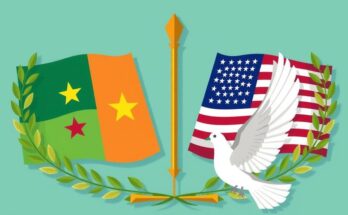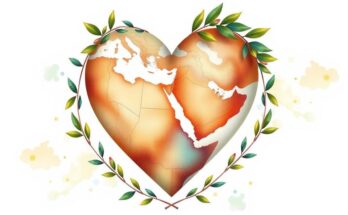The M23 rebellion in the DRC has surged since January 2025, capturing significant territories while the Congolese military struggles to respond. The humanitarian crisis is severe, with extensive displacements and casualties. Diplomatic efforts have failed, leading to increased tensions with regional neighbors. Future scenarios include potential military control by M23, another civil rebellion, or protracted conflict. Inclusiveness and legitimacy in governance are crucial for any resolution.
Since January 2025, the M23 rebellion has progressed significantly in the Democratic Republic of the Congo (DRC), following the capture of Goma and Bukavu, the capitals of North and South Kivu. The Congolese military, known as FARDC, has struggled to oppose M23 effectively, especially after the departure of European mercenaries. Additionally, Burundian forces have begun withdrawing after M23’s takeover of critical locations such as Kavumu airport, which has exacerbated the conflict.
The M23 has continued its advance toward Uvira, the third-largest city in the Kivus, while also engaging Congolese positions north of Goma. Reports indicate that Ugandan troops entered the DRC under the pretext of fighting the Allied Democratic Forces (ADF), despite potential suspicions of collaboration with M23. This instability has raised concerns among International leaders and observers about the myriad of local and regional players involved.
The humanitarian situation in the DRC is dire, with the UN estimating around 3,000 fatalities during the assault on Goma, a number that many believe to be conservative. Nearly 500,000 individuals were displaced prior to the conflict escalation, and now total displacements in the region amount to approximately 4.6 million. The violence in the region has routinely fostered a high risk of mass atrocities in a context of widespread predation by armed groups.
Calls for a ceasefire from the East African Community (EAC) and Southern African Development Community (SADC) have not yielded significant progress, reflecting ongoing tensions and disagreements among regional actors. The situation is further complicated by popular resentment against Rwanda and Uganda, as evidenced by the targeting of their embassies in Kinshasa amid protests following the M23’s advances.
Forces such as SADC, led by Congolese President Felix Tshisekedi, have been engaged, but existing tensions between regional blocs and their military effectiveness remain uncertain. Casualties among SADC troops have heightened concerns, and South Africa has warned of potential escalation if hostilities persist, with Rwanda’s leaders issuing equally firm responses.
The M23 has modified its tactics since previous conflicts, establishing administrative governance structures and absorbing defeated Congolese forces through political education. They are reported to be financially bolstered by taxes levied from profitable mining operations, with lucrative mineral assets such as coltan reinforcing their military capabilities substantially.
Efforts at diplomacy have faltered despite summits aimed at fostering regional cooperation. The Congolese government has faced criticism for expelling the EAC Regional Force and resorting to militias, undermining collaborative efforts against armed groups. Optimal resolutions necessitate inclusive dialogues and must reflect historical lessons.
Looking ahead, three primary scenarios have emerged regarding the direction of the conflict: a deepening M23 control akin to annexation by Rwanda, another expansive civil rebellion reminiscent of earlier wars, or a prolonged civil war if diplomatic resolutions fail. Meeting these challenges requires a concerted effort for legitimate governance and sustainable peace efforts involving all stakeholders in the DRC and the region.
Reflecting on DRC’s challenges reminds one of its historical struggles with governance. Re-establishing a democratic framework through meaningful dialogue involving diverse stakeholders will be critical. International support must align with local initiatives to rebuild the legitimacy of the state and promote enduring peace within the region.
The ongoing crisis in the DRC presents a complex landscape shaped by the resurgence of the M23 rebellion, regional rivalries, and a severe humanitarian crisis. The inability to establish a ceasefire reflects deep-seated tensions among local and regional players. Proposed scenarios suggest paths ranging from increased M23 control to widespread civil conflict. Ultimately, a concerted effort toward inclusive governance and diplomatic engagement is essential for restoring stability in the DRC.
Original Source: reliefweb.int




